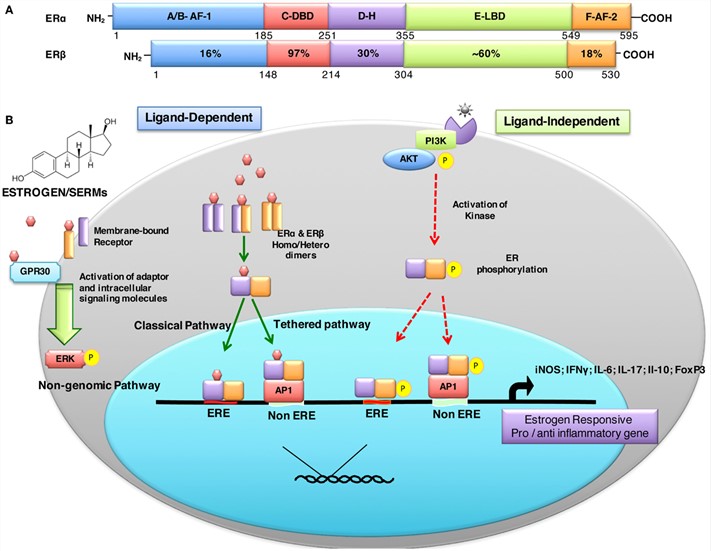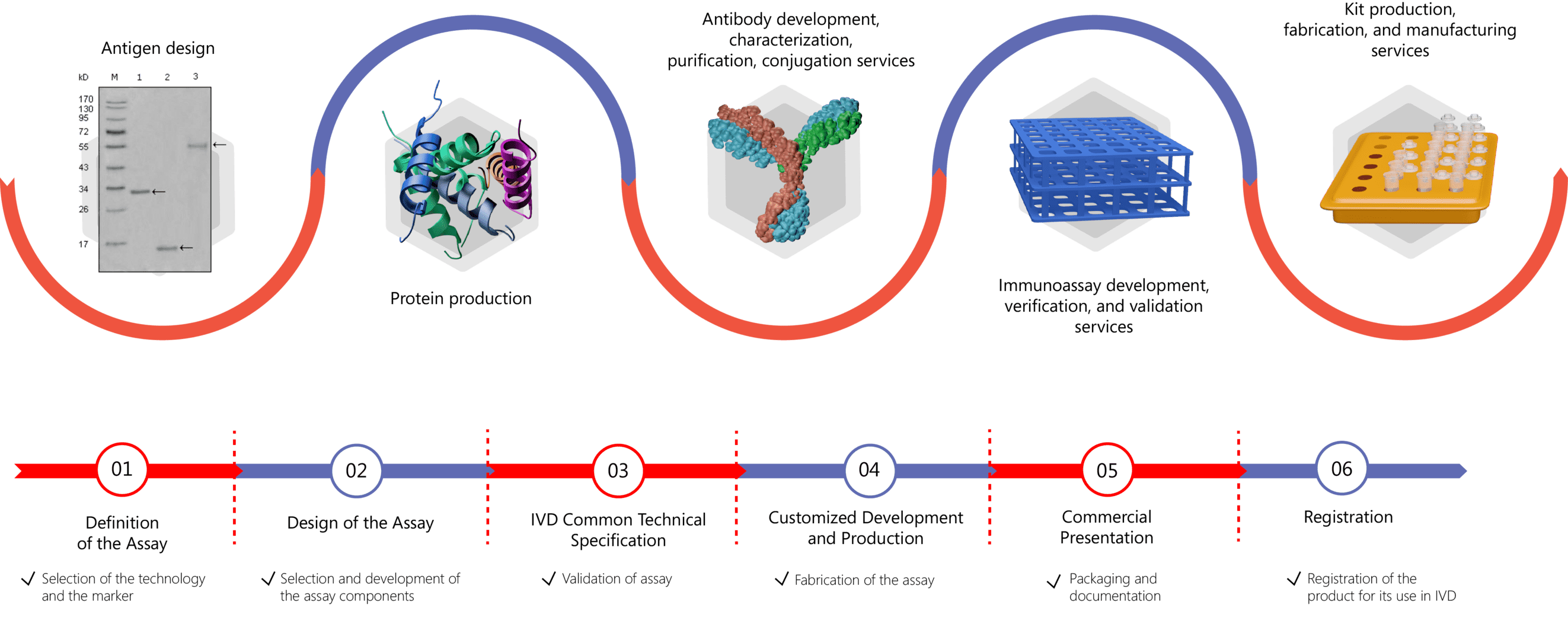Creative Biolabs is a leading service provider that focuses on antibody discovery and generation for various applications. Now, we introduce our high-quality IVD (in vitro diagnostic) antibody and immunoassay development services to global clients. Our services target a wide range of disease biomarkers with diagnostic or prognostic potential, such as ER (estrogen receptor), a diagnostic & prognostic biomarker of breast cancer.
Introduction to ER
There are two main estrogen receptors, ERα and ERβ encoded by ESR1 and ESR2, respectively. ERα and ERβ show greatly homology in the sequence as they both are characterized by five functional domains from the N-terminal to C-terminal. The A/B (containing AF-1 domain) domain functions as transcriptional activation. The C domain is a DNA-binding domain (DBD) that can recognize and bind to the ERE (estrogen response element) region. The D domain acts as a connection between C and E domains. Both E and F domains are ligand-binding domains. Besides, there is another transcriptional activation domain AF-2 in the F domain and which is activated in a ligand-dependent manner, whereas the AF-1 domain is activated in the ligand-independent pathway.
Estrogen receptors are triggered by both the ligand-dependent pathway and the ligand-independent pathway. Estrogen binding to the E domain of the ER induces the ER conformational changes and dimerization including homodimers (ERα: ERα and ERβ: ERβ) or heterodimer (ERα: ERβ). Then these dimers translocate into the nuclei and bind to the ERE region to promote the transcription of specific genes resulting in a cell function change (classical pathway). The dimes also can interact with the activator protein 1 (AP-1) to promote transcription (“tethered pathway”). The non-genomic pathway is triggered by the binding of estrogen to the membrane-bound ERs such as GPR30, which results in the activation of cytosol signaling pathways (PKC). In addition, the ligand-independent pathway is triggered by the phosphorylation of ERs by other active signaling pathway and which results in both ERE and non-ERE genomic events.
 Fig.1 Structural and sequence homology of human ERα and ERβ (A). And estrogen receptor ligand-dependent and ligand-independent signaling (B).1
Fig.1 Structural and sequence homology of human ERα and ERβ (A). And estrogen receptor ligand-dependent and ligand-independent signaling (B).1
ER As A Biomarker for Breast Cancer Diagnosis & Prognosis
Based on the ER status, breast cancers can be classified into ER-positive and ER-negative. It has been reported that about 75% of breast cancer cases are ERα-positive at diagnosis. Breast cancers that are ERα-positive can respond to endocrine therapies and CDK4/6 inhibitors. The ER status in patients with breast cancers was originally assessed using biochemical ligand-binding assays and then replaced by immunohistochemistry (IHC) assays. IHC assays used highly specific monoclonal antibodies directed against ER and results were generally reported as the percentage of stained cells combined with the intensity of staining. Moreover, ER positivity has been demonstrated to correlate with breast cancer prognosis.
IVD Antibody & Immunoassay Development Services Provided by Creative Biolabs
At Creative Biolabs, we offer high-quality one-stop IVD antibody & immunoassay development services to global clients, covering antigen production, antibody development, labeling, and conjugation, as well as immunoassay development. Our hands-on experience and expertise allow us to provide our clients with the best-quality antibody (pairs) for the development of robust and specific assays. For more detailed information about what we offer for each stage of the development process, please click the links below:
- IVD Antibody Development
- Antibody Pair Development
- Antibody& Protein Conjugation
- IVD Immunoassay Development

Please feel free to contact us for more information and discuss your project needs.
Reference
- Khan, Deena, and S. Ansar Ahmed. "The immune system is a natural target for estrogen action: opposing effects of estrogen in two prototypical autoimmune diseases." Frontiers in immunology 6 (2016): 635. Distributed under Open Access license CC BY 4.0, without modification.
For Research Use Only.

